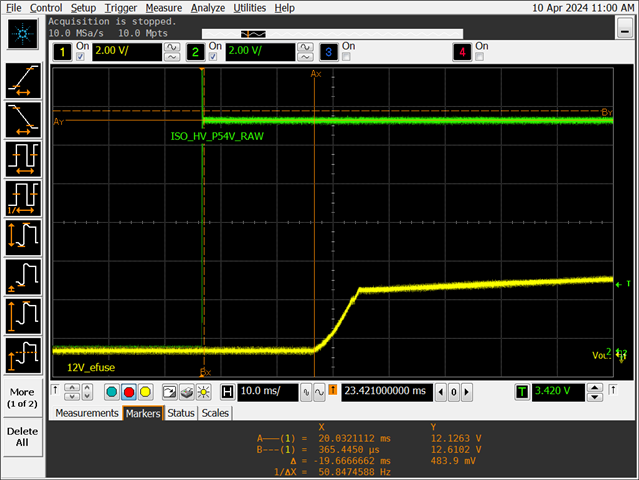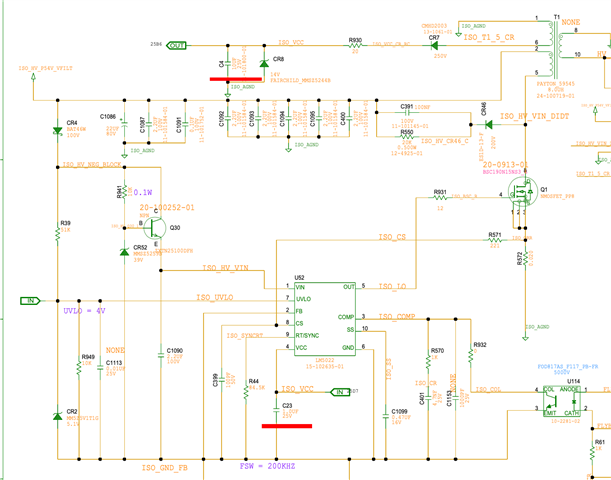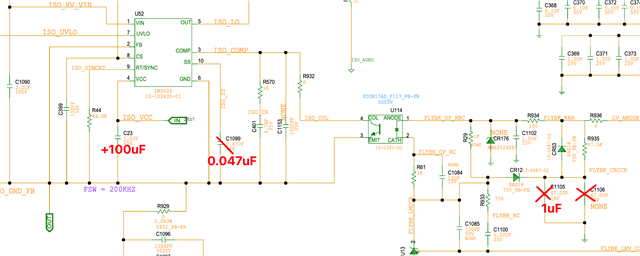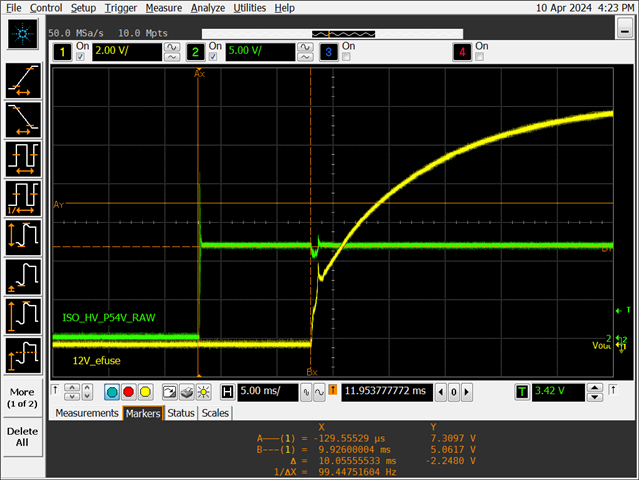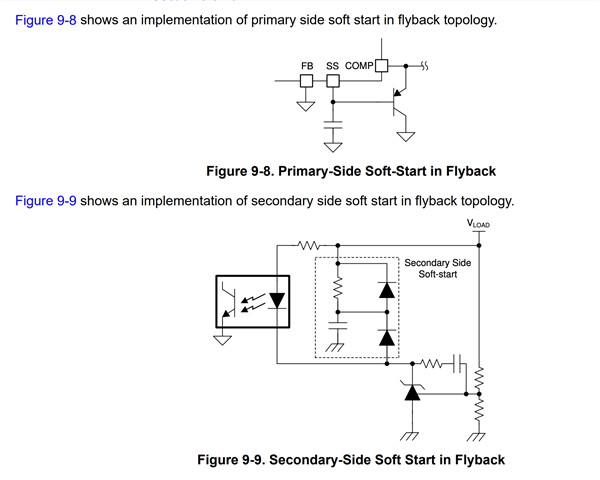Hi TI experts,
For LM5022 based flyback design, we measured there is about 20ms delay from Input ramps up to Vout starts ramping.
Can i know why there is a delay?
How can we reduce the delay?
Thanks.
Input and output waveform:
Green is input voltage, Yellow is output voltage.

Zoomin waveform
